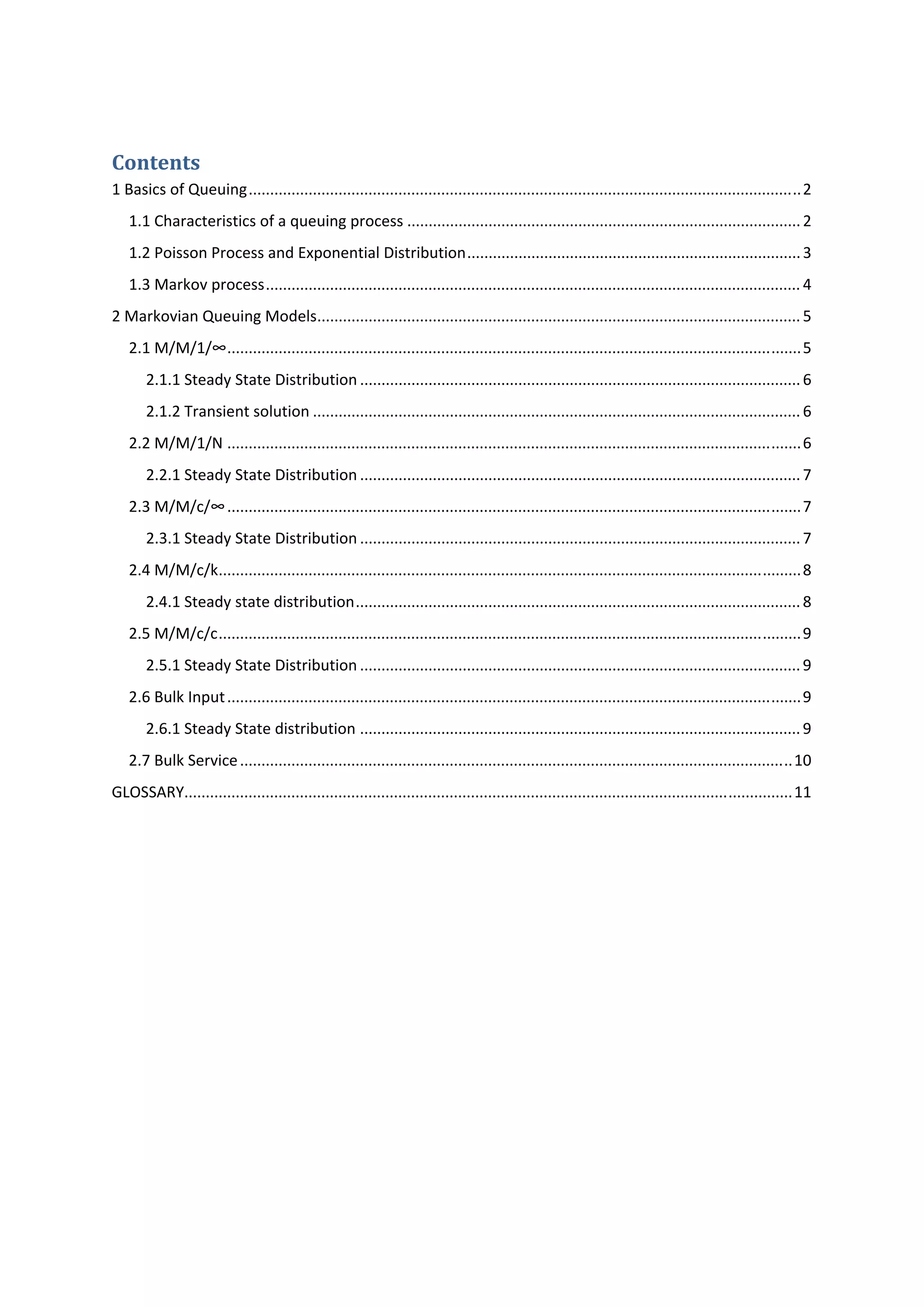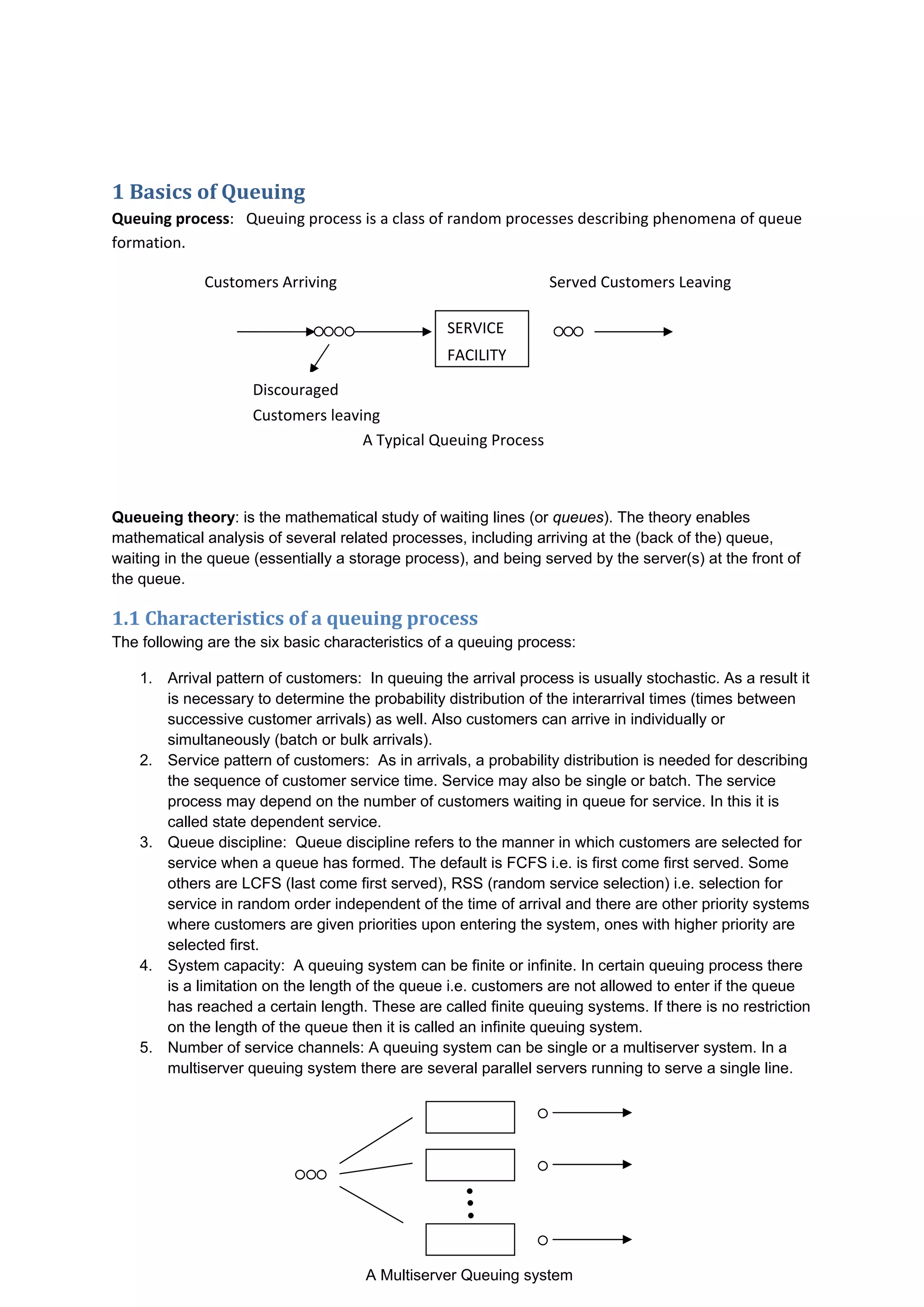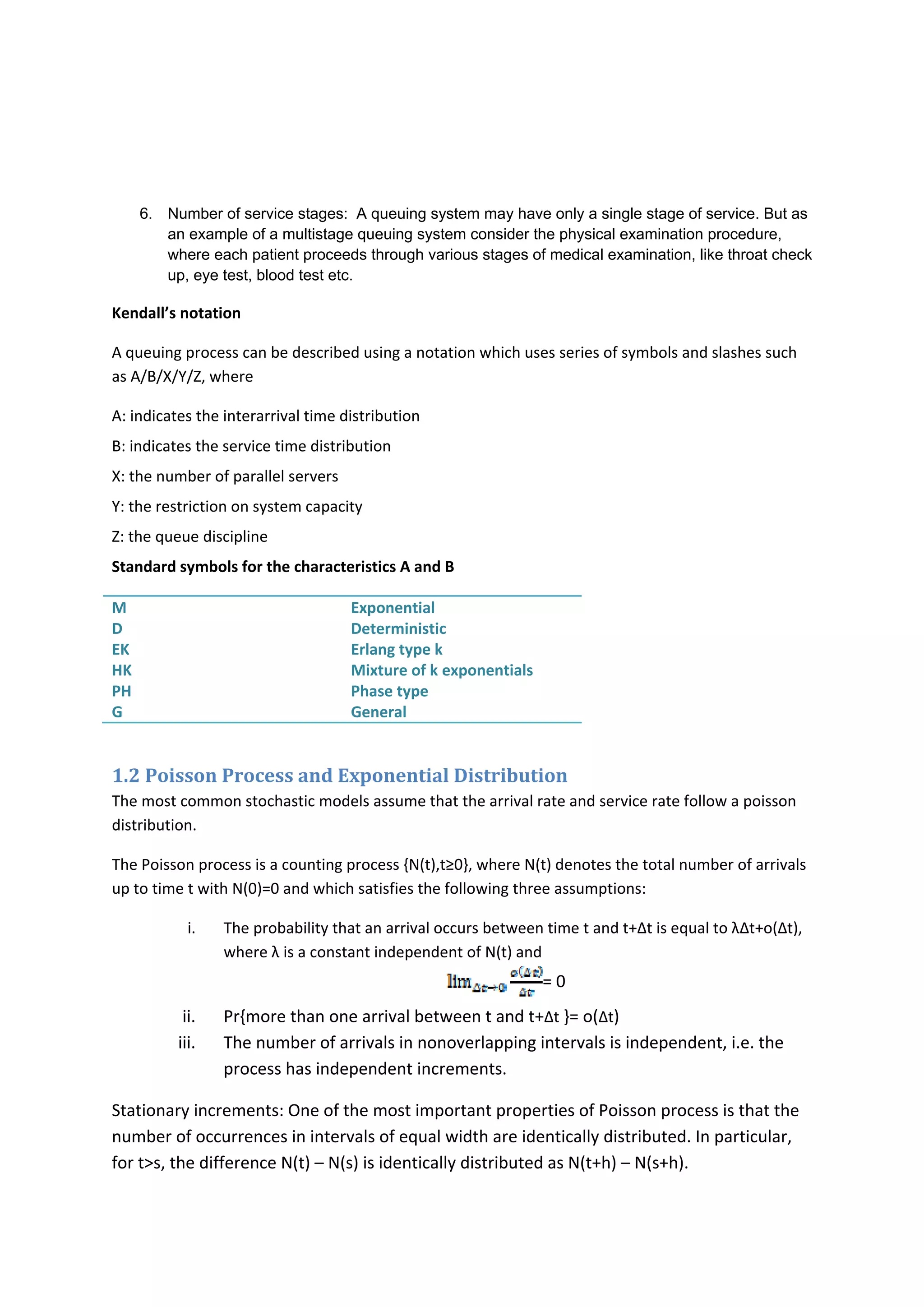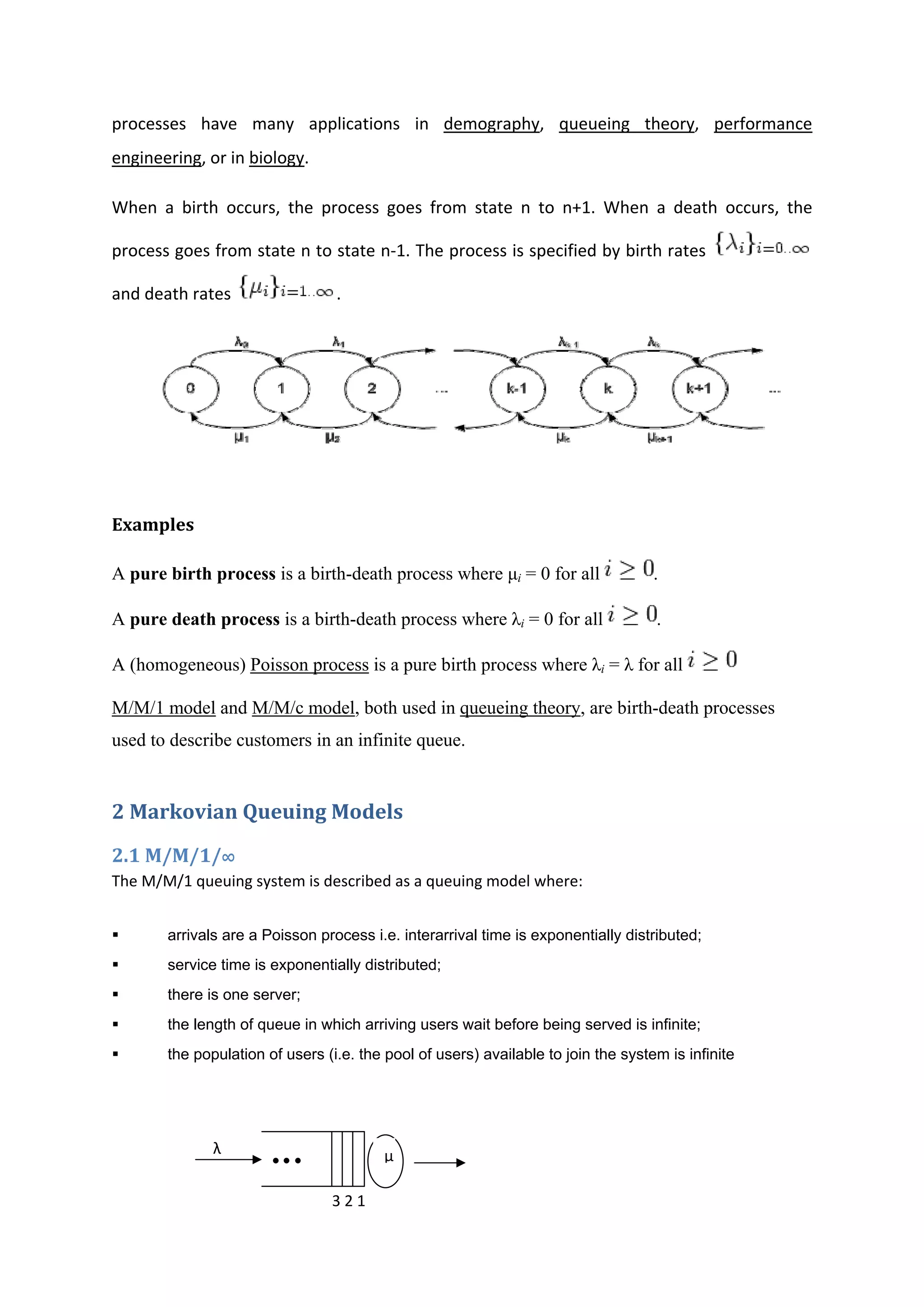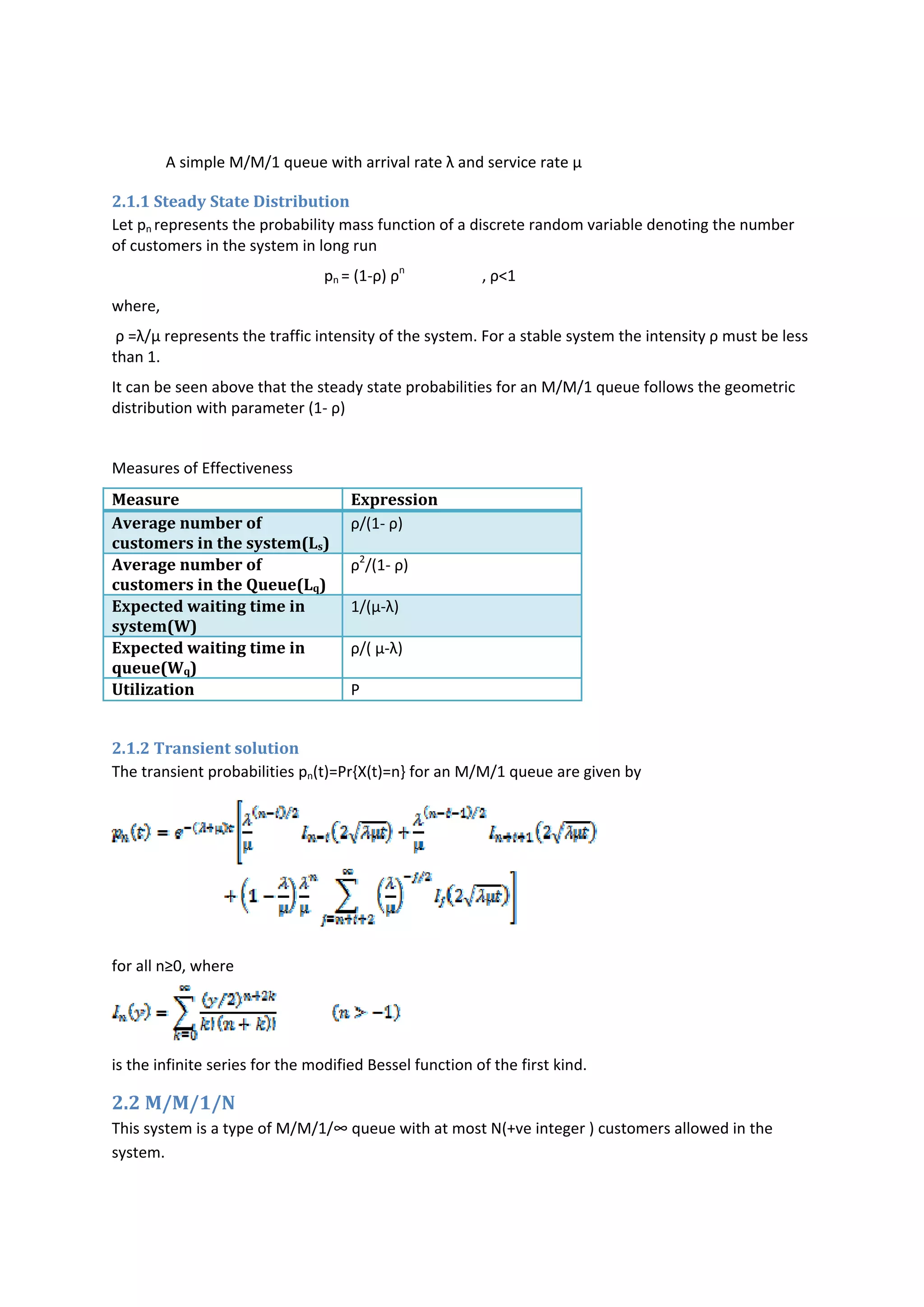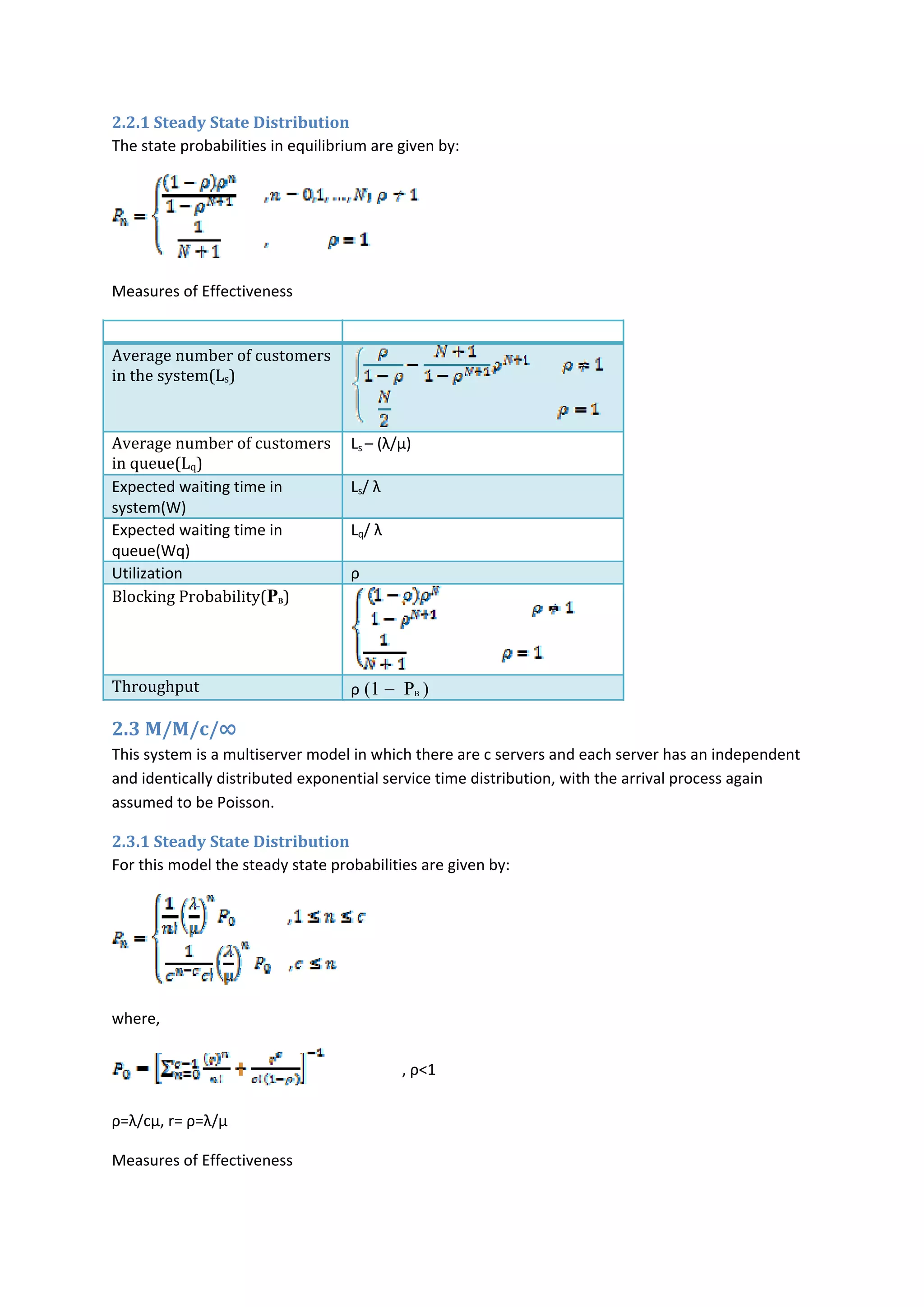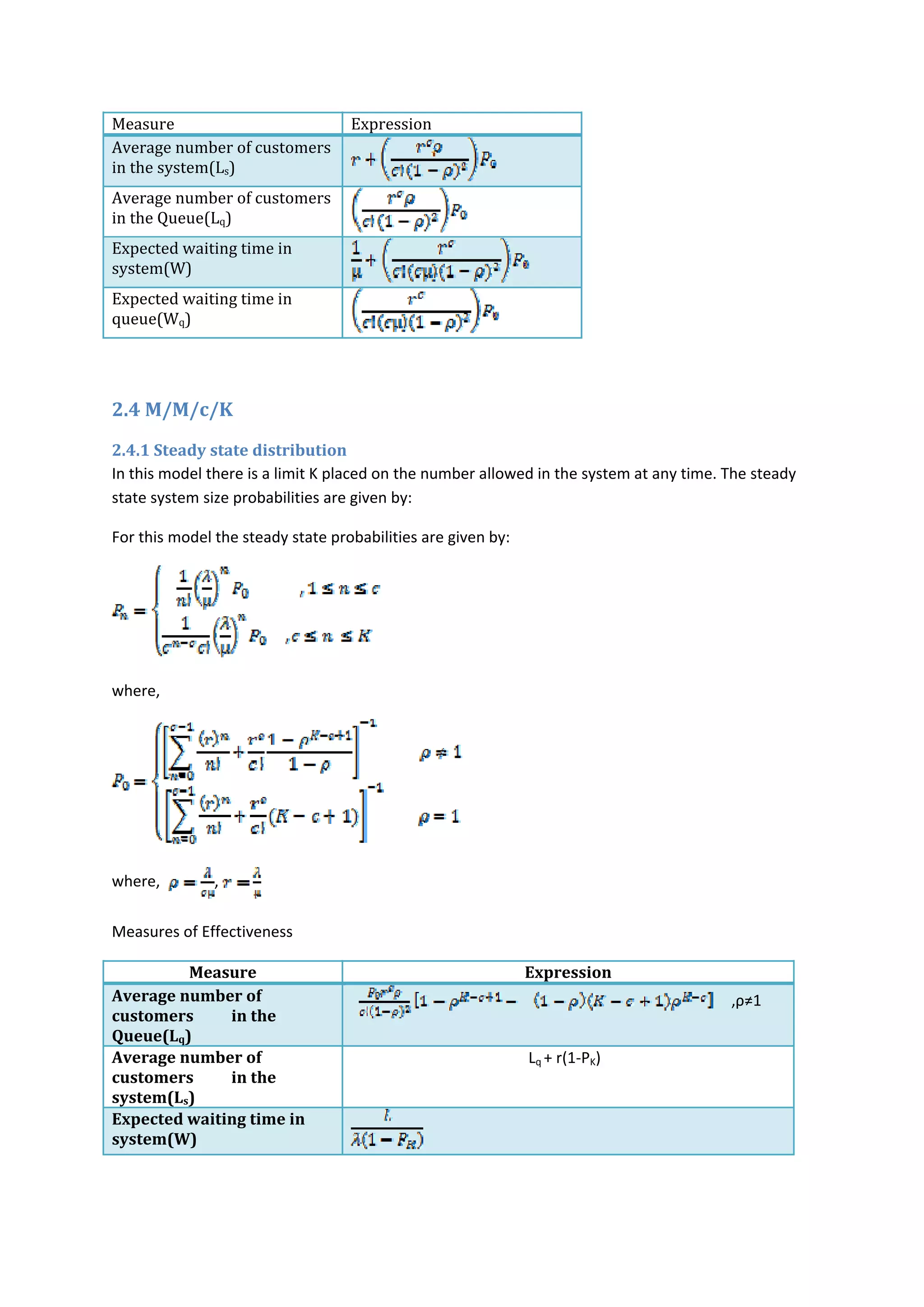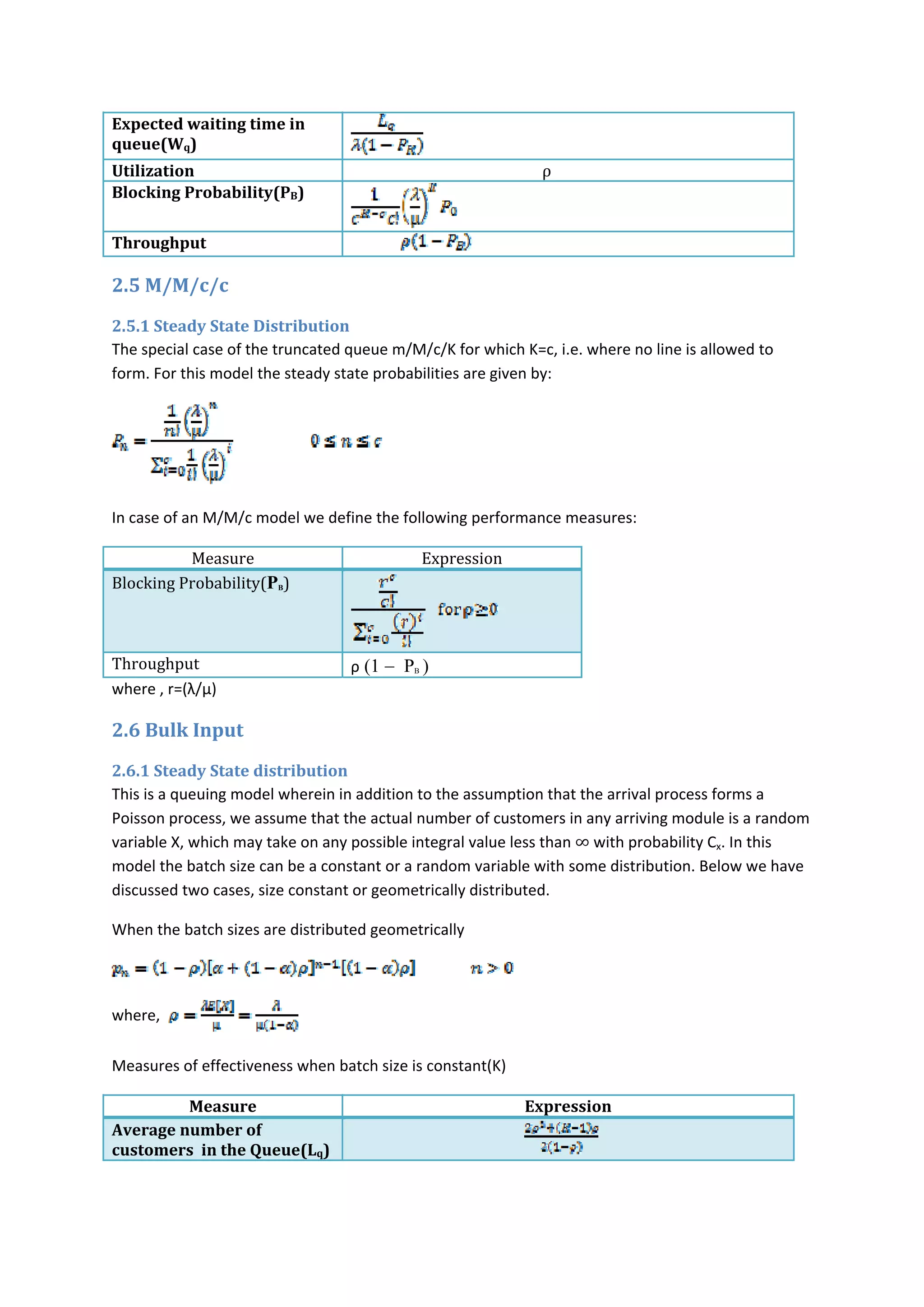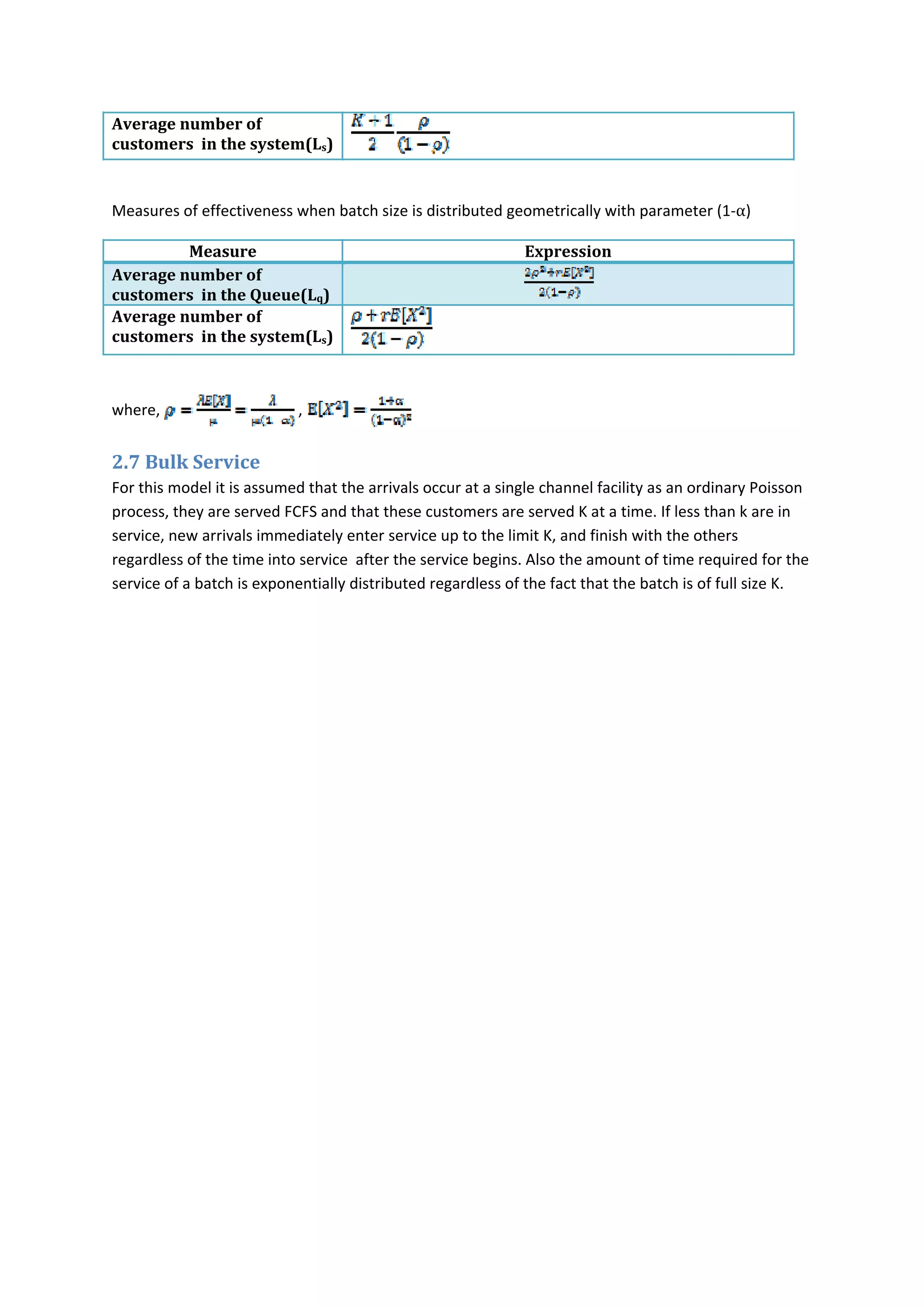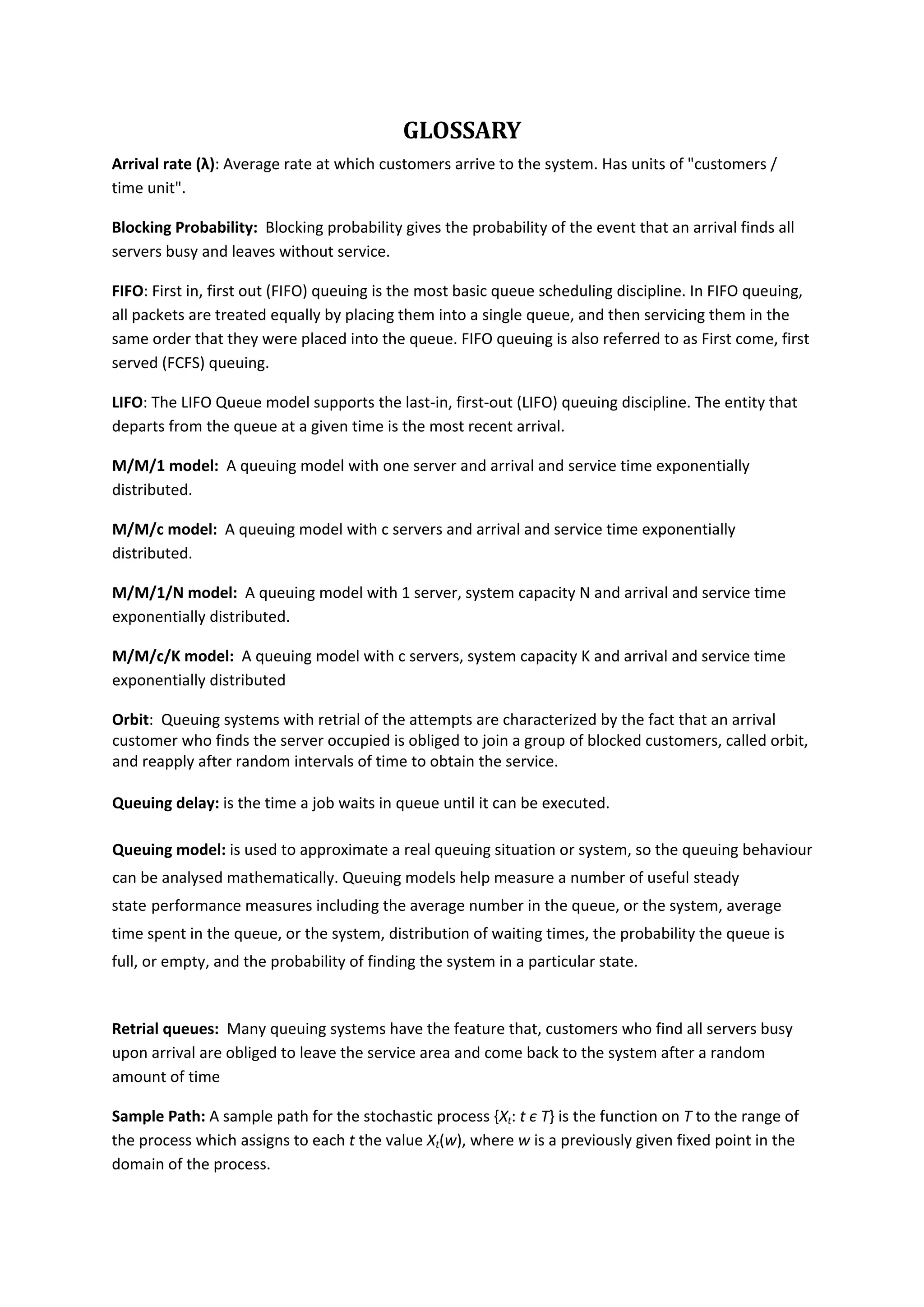This document discusses queuing theory and Markovian queuing models. It begins with the basics of queuing processes, including their characteristics like arrival and service patterns. It describes the Poisson process and exponential distribution as common stochastic models for arrivals and service times. It then introduces Markov processes and continuous-time Markov chains. The bulk of the document covers specific Markovian queuing models like M/M/1, M/M/c, and their steady-state distributions. It also briefly discusses bulk arrival and service queuing models.
